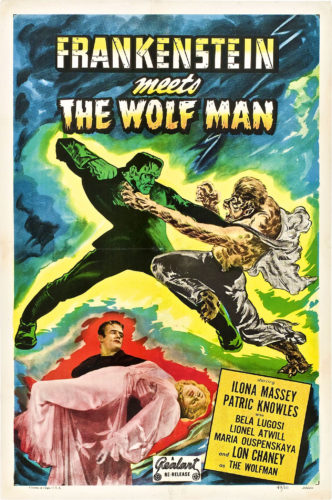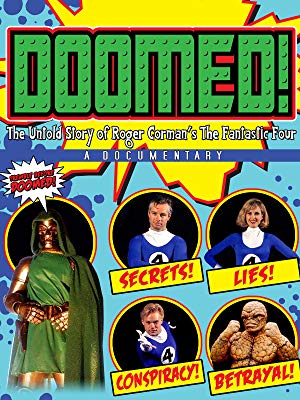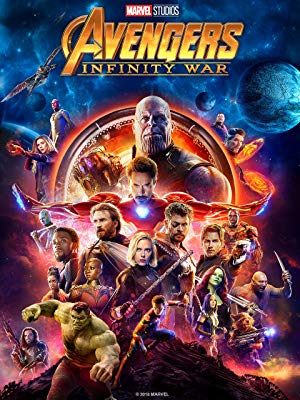 Frankenstein Meets the Wolf Man (1943) – And how, you may ask, does Larry Talbot, the ill-fated Wolf Man, return for his first sequel after dying at the end of the original? Simple: He can’t die! No, really — even after a silver bullet dispatched him, all it takes is for the full moon to shine on his exposed, perfectly preserved corpse while graverobbers are plundering his family vault, and ta-dah! And apparently he wasn’t embalmed, although we at least have to assume that the undertaker dug out the silver bullet that did him in. But now, nothing can truly kill him! (The screenplay feints at wondering why the werewolf whose bite cursed Talbot certainly seemed to die, but then covers it up with a heavy layer of SHUT UP SHUT UP SHUT UP.)
Frankenstein Meets the Wolf Man (1943) – And how, you may ask, does Larry Talbot, the ill-fated Wolf Man, return for his first sequel after dying at the end of the original? Simple: He can’t die! No, really — even after a silver bullet dispatched him, all it takes is for the full moon to shine on his exposed, perfectly preserved corpse while graverobbers are plundering his family vault, and ta-dah! And apparently he wasn’t embalmed, although we at least have to assume that the undertaker dug out the silver bullet that did him in. But now, nothing can truly kill him! (The screenplay feints at wondering why the werewolf whose bite cursed Talbot certainly seemed to die, but then covers it up with a heavy layer of SHUT UP SHUT UP SHUT UP.)
As for the Frankenstein monster though (this time played by Bela Lugosi, who belatedly reversed himself on the role he had famously turned down in 1931, allowing Boris Karloff to become a star), it had already come back from putative death three times before this, so no one even bats an eye that he’s found in a block of ice which really has no business being where a block of ice is.
And resurrections are already so de rigueur in this shared cinematic universe that the ending doesn’t even bother to make it look like either monster is for real and truly dead. We all know they’re coming back.
 Doomed: The Untold Story of Roger Corman’s The Fantastic Four (2015) – I don’t think there’s ever been an unreleased movie so beloved of fandom (sight unseen, for the most part). From the bootleg clips included here in between interview segments with the principals involved in front of and behind the camera, it’s pretty apparent that the chances Roger Corman mounting a production that does justice to The Fantastic Four are about a tenth as good as a Jamaican bobsled team winning the Olympics, even at the *cough* princely budget (for a Corman production) of about a million and a half. It’s pretty clear that the whole thing, a co-production with an even less-known production company, was a gambit to keep the film rights to the intellectual property from lapsing, although from the interviews with director, editor, stars, and various production staff showed that they really wanted to make a good movie — or at least an enjoyable one. As with most films made under trying strictures, the behind-the-scenes stories end up being more entertaining than the one they tried to put on screen.
Doomed: The Untold Story of Roger Corman’s The Fantastic Four (2015) – I don’t think there’s ever been an unreleased movie so beloved of fandom (sight unseen, for the most part). From the bootleg clips included here in between interview segments with the principals involved in front of and behind the camera, it’s pretty apparent that the chances Roger Corman mounting a production that does justice to The Fantastic Four are about a tenth as good as a Jamaican bobsled team winning the Olympics, even at the *cough* princely budget (for a Corman production) of about a million and a half. It’s pretty clear that the whole thing, a co-production with an even less-known production company, was a gambit to keep the film rights to the intellectual property from lapsing, although from the interviews with director, editor, stars, and various production staff showed that they really wanted to make a good movie — or at least an enjoyable one. As with most films made under trying strictures, the behind-the-scenes stories end up being more entertaining than the one they tried to put on screen.
 Avengers: Infinity War (2018) – As the last person in the world to see this movie who had any interest in seeing it, I can be dead certain that you don’t need to hear my overview… but I also know that I don’t have to worry about spoilers. So some point-form observations:
Avengers: Infinity War (2018) – As the last person in the world to see this movie who had any interest in seeing it, I can be dead certain that you don’t need to hear my overview… but I also know that I don’t have to worry about spoilers. So some point-form observations:
– Thanos is not only wrong, but his plan is stupid. If you’re dealing with a single intelligent species in a finite ecosphere — say, non-space-faring humanity — then it’s at least hypothetically logical. But when you’ve got a civilosphere [a term I just barely coined, meaning an ecosphere of distinct civilizations] whose environs and resources far outpace its expansion — as demonstrated by the easy space travel and teleportation exhibited in this movie, as well as all the mostly-uninhabited-but-habitable planets shown here and in the Guardians of the Galaxy and Thor movies — then the idea that sapient life is somehow overburdening the available resources is laughable on its face. And even if that had been shown to be so, why such an arbitrary non-solution as “vaporize half of the intelligent beings in the universe” (nothing is shown to support the idea that Thanos takes out half of all life forms), while leaving intact (more or less) the cultures and technologies that allow certain species to become rapacious on an interstellar scale? As we know from the suddenness and uniqueness of the Industrial Revolution here on Earth, there’s no reason that even intelligent species and civilizations will become technologically adept and ecologically overwhelming; why not just, say, wipe out all civilizations that had passed the bounds of their own solar systems? Or would that just have been too much work for poor Thanos?
– Congratulations, Starlord. By having your own “Drax moment,” unable to restrain yourself for just two minutes from punching Thanos in the face, you wiped out half of all intelligent life in the universe.
– There’s a lot of feeling-before-thought in this movie, in fact. Starlord, oddly enough, is the only one who demonstrates the ability to make a hard choice, aiming and shooting at Gamora because he promised. But then he “makes up” for it in the later scene mentioned above. On top of that we’ve got:
Gamora unable to keep from giving away a secret to Thanos which she knows will spell death for billions, because she can’t bear to watch her sister be tortured; and
The earthbound Avengers willing to gamble the literal fate of the cosmos on whether they, by a long shot, might be able to detach an Infinity Stone from Vision’s forehead.
I get it, these are damnably hard choices. But heroes need to make them. And there’s a difference between Star Trek III-style “the good of the one outweighs the good of the many” selflessness when the many choose to self-sacrifice for a fellow, rather than a “hero” letting untold billions die because he/she couldn’t bear watching a dear one die. It’s a triumph of Feelz over rationality, and it doesn’t say much for the gestalt that spawned the tale when the putative villain is shown to be the only one who’s able to place his (bass-ackwards) rational aims over his emotional distress.